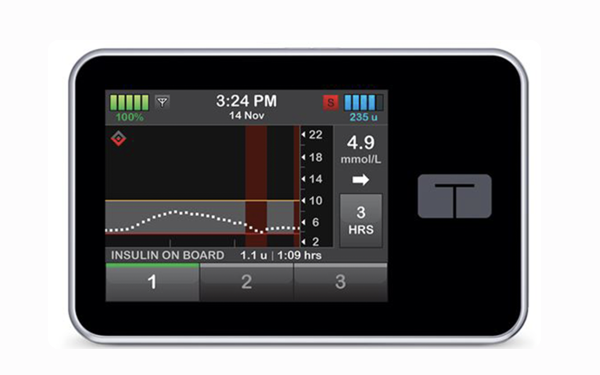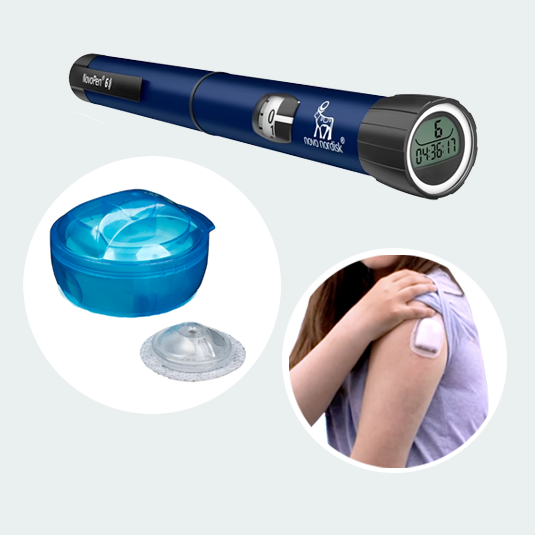Insulin Delivery Systems

Insulin Pump Therapy
An insulin pump delivers tiny amounts of insulin into the subcutaneous tissue throughout the day and night. This can help improve blood glucose levels and reduce hyperglycaemia (high) and hypoglycaemia (low). The insulin pump is connected to you via a (cannula) this is a tiny tube which sits under your skin.
The tube is replaced every 2 to 3 days and the cannula is moved to another part of your body. The pump delivers background insulin continuously, set to the individual’s requirements. You then add your extra mealtime insulin using the pump. A pump can give you more flexibility with what you eat and how you deliver insulin. A pump may help reduce blood glucose variability helping to maintain more stable blood glucose levels.

Patch Pumps
Insulin held in a small pod/patch (max 200 units). The pod is applied to the skin and the cannula is inserted under the skin. This needs to be changed every 2-3 days. Controlled via a separate device connected to Bluetooth. Insulin is then delivered as a continuous background known as the basal, with the individual inputting mealtime insulin using the connected handset.
Connected Pens/ Smart Pens
Insulin is injected into the skin using an insulin pen and needle. Data held in the pen can be uploaded for review by the individual or shared with their clinic.
I-Port Advance
An I-Port Advance- This is a small injection port that can be used to deliver insulin without having to puncture the skin each time.
This may help individuals that find injections painful and difficult but are not ready or wanting to move onto an insulin pump.
The I-Port device is changed every 2-3 days.


What People Say About Pumps and Closed Loop Systems
In this film, young people discuss the pros and cons of pumps and closed loop systems